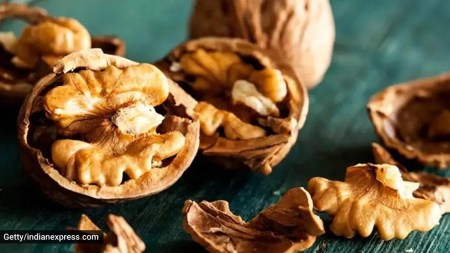Does switching from polished to unpolished rice control diabetes and weight?
There are so many theories floating around that the consumption of polished rice may not be good for individuals who are watching their weight or trying to lower their blood sugar levels. As such, certified teacher evaluator with the AYUSH Ministry Mayur Karthik took to Instagram to share that tweaking your diet to switch from polished to unpolished rice can be a game-changer.
“Switch from white polished rice to whole rice like brown, black, or red,” said Mayur, who further went on to explain why.

According to Mayur,
*In white polished rice the husk, bran, and seed germ are removed fully through processing, resulting in a reduction or complete depletion of several dietary vitamins, minerals, and fibre leaving just the starchy carbohydrates. “Whereas in the whole rice, everything is intact. Even white rice that hasn’t gone through this extensive processing is good to consume,” said Mayur.
*White polished rice has a very high glycemic index, meaning it causes a quicker spike in blood sugar levels, not conducive for people with diabetes.
*The fibre in whole rice, aids in better digestion and maintains a healthy gut.
*The high fibre content in whole rice makes you feel fullness with less. “In contrast, white rice may be less filling, potentially leading to overeating and unwanted weight gain,” said Mayur.
 Are you looking to control your blood sugar levels? (Source: Getty Images/Thinkstock)
Are you looking to control your blood sugar levels? (Source: Getty Images/Thinkstock)
*”Traditionally our forefathers consumed whole rice. It was around the industrial revolution time, rice milling and polishing started as it helped prevent spoilage and extend the storage life of rice helping in better business, mass production and fight food shortage,” said Mayur.
He also mentioned that rice with bran and germ can contain “inorganic arnsenic”. “So washing the rice nicely, cooking it with excess water can help remove a major portion of the arsenic content,” said Mayur.
How is unpolished rice different?
Traditionally consumed after polishing or whitening, this process removes the nutrient-rich outer layer, leading to losses in dietary fibre, bioactive compounds, and vitamins. “Additionally, polishing increases the glycemic index due to higher starch content,” said Dr Vikas Jindal, consultant, dept of gastroenterology, CK Birla Hospital, Delhi.
Compared to polished rice, unpolished rice boasts a higher content of fibre, antioxidants, vitamins, and minerals, said Dr Jindal. “These nutrients play crucial roles in a balanced diet, which requires adequate protein, carbohydrates, fats, and vitamins. For weight management and diabetes control, consuming foods low in calories, fat, and sugar is key. This is where fibre shines,” said Dr Jindal.
According to Dr Jindal, it promotes satiety, lowers cholesterol levels, aids in bowel health, and assists in maintaining a healthy weight. “The fibre and nutrient richness of unpolished rice can enhance satiety, promoting a feeling of fullness and potentially reducing overall calorie intake. This aspect makes it a valuable addition to weight management efforts, providing sustained energy without compromising nutritional value,” explained Dr Rohini Patil, nutritionist, founder, Nutracy Lifestyle.
Brown rice boasts a distinct nutritional profile. Unlike polished rice, where calories come primarily from carbohydrates, brown rice derives its calories from protein and contains the fibre-rich husk that increases satiety, preventing overconsumption. “This translates to a steadier release of sugars, potentially preventing blood sugar spikes associated with diabetes. Studies have confirmed these benefits, demonstrating that consuming 150 grams of unpolished rice daily for six weeks led to significant reductions in body weight and waist circumference compared to polished rice consumption,” said Dr Jindal.
What is to be kept in mind?
However, it’s not without its drawbacks. Dr Jindal mentioned that the neutral bran layer contains phytate, which can hinder the absorption of calcium, iron, and zinc, potentially leading to deficiencies. This is something to consider when planning a diet solely on brown rice, said Dr Jindal.
The biggest hurdle towards wider adoption lies in its taste and texture. “The presence of phenolic compounds and fibre in the outer bran layer contributes to a nutty flavour and a firmer texture, often perceived as an astringent.
Additionally, brown rice takes longer to cook.
However, these challenges can be addressed.
Dr Jindal shared, “Pre-soaking for 30 minutes can reduce cooking time and soften the texture.”
View this post on Instagram
A post shared by Mayur Karthik (@karthikmayur)
Disclaimer: The copyright of this article belongs to the original author. Reposting this article is solely for the purpose of information dissemination and does not constitute any investment advice. If there is any infringement, please contact us immediately. We will make corrections or deletions as necessary. Thank you.





